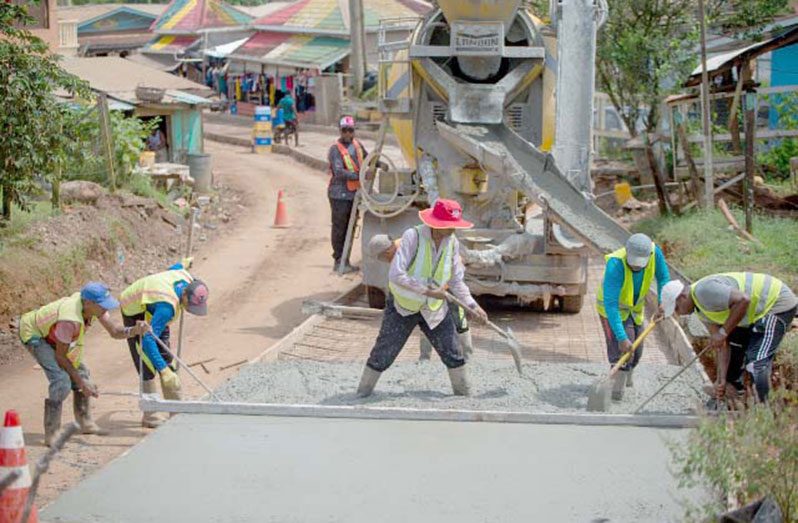BUILDING on the progress made in 2021 as a result of increased public and private investments, Guyana’s vibrant construction industry is expected to advance even further this year.
Driven by plans to further invest heavily in the establishment and maintenance of critical infrastructure, the construction industry is projected to grow by 10.5 per cent in 2022.
Speaking from the public investment side, Senior Minister in the Office of the President with responsibility for Finance, Dr Ashni Singh, during his presentation of Budget 2022, had said: “Mr. Speaker, the government is committed to filling the substantial infrastructural gaps that exist across our nation. In 2022, we will continue to invest heavily in construction projects across all sectors, alongside major projects coming from private sector investment initiatives.”
Current estimates show that the construction sector grew by 29.8 per cent in 2021 when compared with 2020.
“[This is] underpinned by both the major public infrastructure buildout that is currently underway, as well as increased private sector activity in industrial, commercial, and residential construction,” Dr. Singh related.
It was widely reported last year that from the housing sector to the agricultural sector, there was the mobilisation of resources from both private and public sector stakeholders, who laid the foundation to capitalise on the impending local growth.
Private projects, as reported, ranged from the construction of hotels and apartment complexes, to shopping complexes and office buildings, among other things.
In the public sector, aside from the construction of several low-income houses and houses for young professionals, there were upgrades to highways, main roads, and miscellaneous roads countrywide. This was also supplemented by the commencement of construction of new roads.
There was some $58.2 billion worth of planned expenditure on public infrastructure, last year. On the capital side, the budget for infrastructure was $32.9 billion, or 32 per cent of the total allocation for 2021.
INNOVATIVE, MODERN PUBLIC INFRASTRUCTURE
Addressing the plans for this year, Public Works Minister Juan Edghill had said that the intention is to have innovative and modern public infrastructure.
The government has allocated the largest portion of its milestone $552.9 billion Budget 2022 to the Ministry of Public Works. A total of $96.1 billion has been allocated to the ministry, which is responsible for the country’s infrastructure.
Further, the government has allocated some $76.7 billion for roads and bridges under the Ministry of Public Works in the 2022 budget.
Another component of public infrastructure is the construction of houses and the accompanying facilities to make the environment conducive to living. To this end, the government has allocated $12.4 billion for further development of the housing sector.
“With the construction boom underway, particularly pertaining to the rapid expansion in housing and road projects, the development and expansion of the other mining and quarrying subsector is crucial,” Dr Singh said.
This expansion, he related, has the potential of lowering construction costs since the abundance of local, readily available resources could ease the impact of imported inflationary pressure on the cost of key construction materials.
In an area related to construction and manufacturing, there is expected to be significant growth by the end of this year.
“Improved performance is anticipated for all manufacturing industries in 2022. Sugar, rice and other manufacturing are expected to expand by 11.8 per cent, 28.6 per cent and 8.5 per cent, respectively.
“Growth in value-added from sugar and rice manufacturing reflect developments in cultivation and harvesting. In the case of other manufacturing, we can expect further expansion in the manufacturing of non-metallic products like cement and chemical products, as well as in the manufacturing of fabricated metal products,” Dr. Singh said.
The manufacturing sector, in 2021, is estimated to have grown by 3.5 per cent. While rice and sugar manufacturing are estimated to have declined by 16.1 per cent and 34.7 per cent, respectively, the “other manufacturing” sector is estimated to have expanded by 20.7 per cent.
The expansion in other manufacturing is attributed to increased output of products such as cement blocks, fabricated metal products, beverages, chemical products, and other foods.



.jpg)









